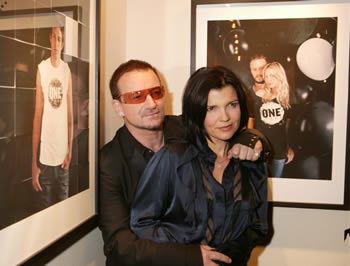Though steadily becoming more common, inclusive size ranges are few and far between. Illustrated by the line drawn in stores between the plus section and the “regular” section, or when sorting by size while online shopping, and finding that the largest option is an “XL”. And most easily seen in bodies that brands use to advertise their clothing.
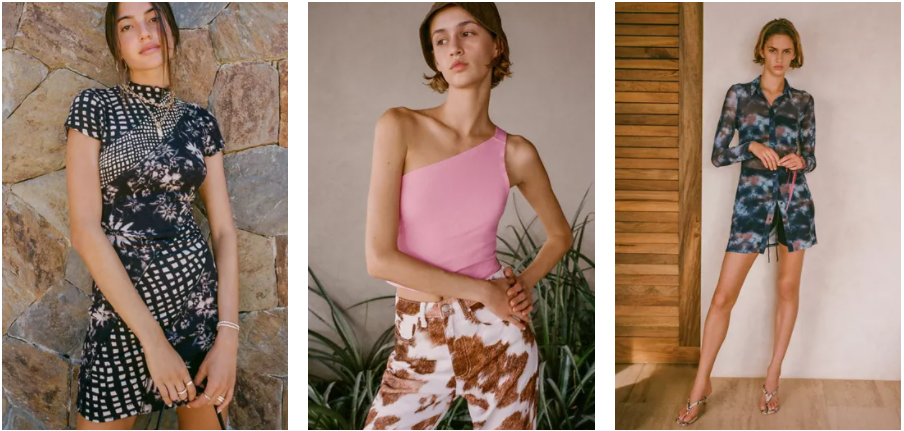
As of 2018, 68% of US women wear a size 14 or larger, falling into the ambiguous category of “plus-size” (George-Parkin). There have been calls for inclusivity in advertising, modeling, and entertainment, but there has also been backlash against the increased representation of different bodies (just ask Nike, who drew vocal disgust over a plus size mannequin in sportswear). The positive reaction outshines the negative, and has shown in profits for companies willing to take the step. And yet, additional research analytics from Edited have revealed that just 2.3% of women’s apparel is available for the plus-size category (George-Parkin).
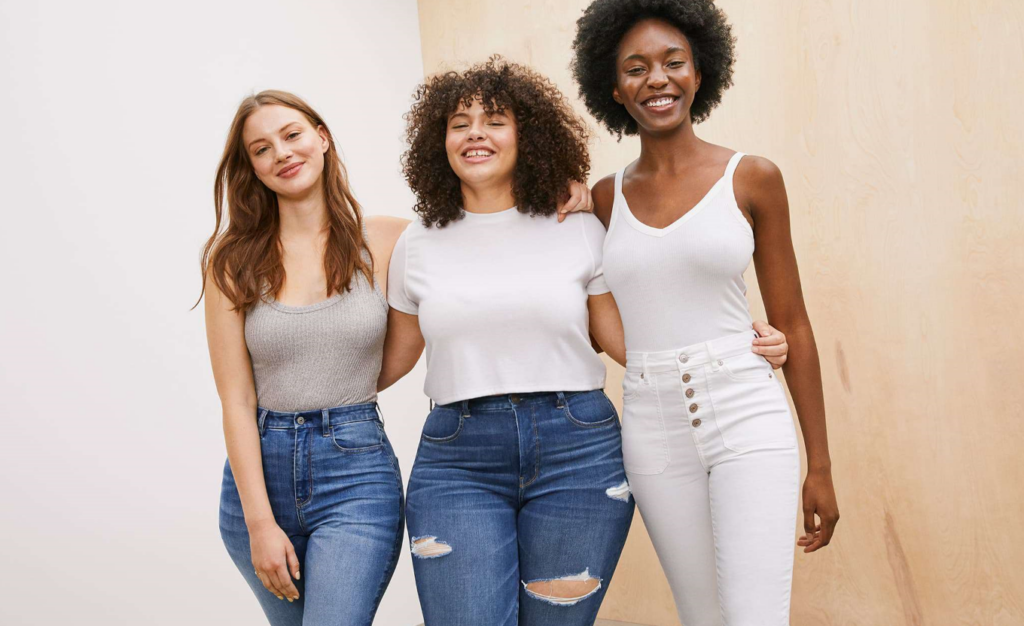
The lack of diverse bodies in advertising and entertainment sends a clear and harmful message. That only specific bodies are attractive, worthy, and deserving of high quality, stylish clothing. This is particularly pervasive in activewear advertisements. You would be hard pressed to find a size 18 person featured in a full page ad for Adidas, or shown on the Lululemon home page. Based on the examples below, an athletic and healthy body, is one of a certain size and shape.
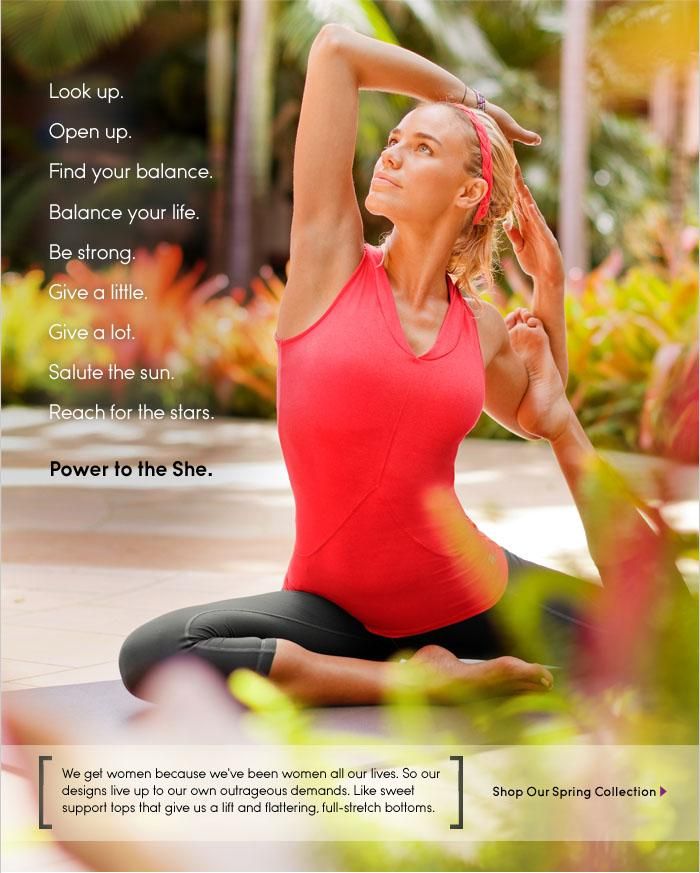
Image from Athleta 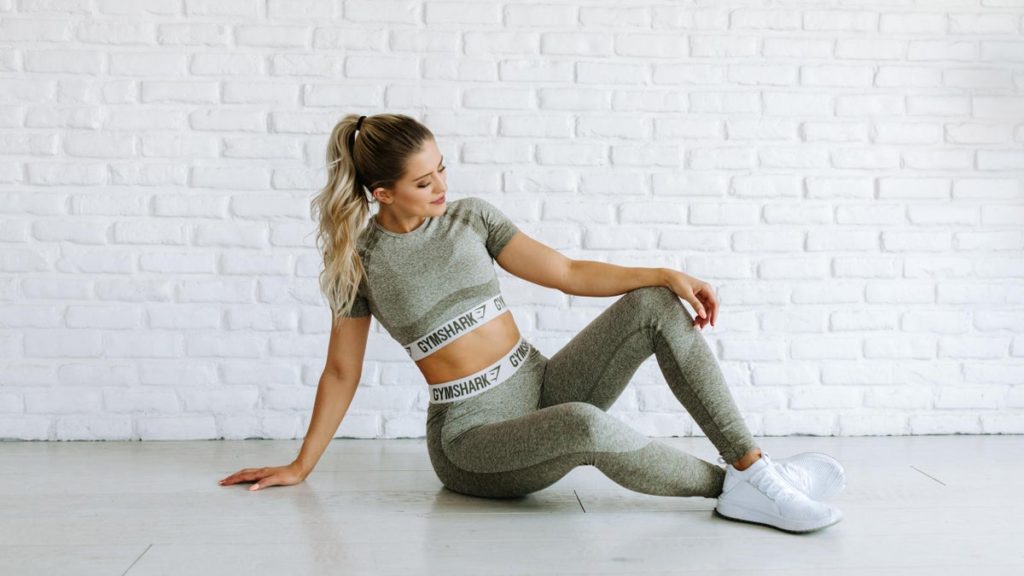
Image from Whitney Simmons for Gymshark 
Image from Fabletics
The fact is, everyone can enjoy movement, and everyone deserves to have access to the tools, resources, and gear that allow them to move and be active. Not all athletes wear an extra small, and we shouldn’t need to meet a size requirement in order to have the opportunity to be athletic. But many of us who fall into the plus-size category can agree that finding quality activewear in our size, can be a difficult and exhausting process. It is ironic that as we are being told we need to exercise and “get fit” we are also not provided with the gear to do so.
I did an informal poll on Instagram, to gauge other’s feelings about activewear shopping and inclusion. This of course is not hard data, nor by any means a random sample, but I felt it was important to get an opinion from voices outside my own.
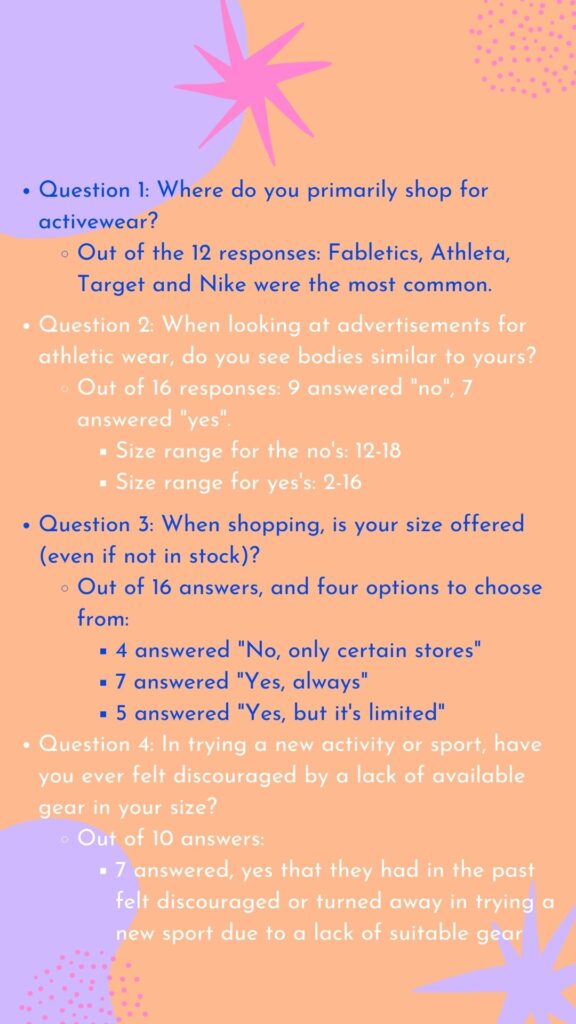
The answers I received, particularly to questions two and four, where disheartening. Out of a sample of 10, 70% had felt turned away from trying something new and active due to a lack of inclusivity in gear (gear encompasses activewear and specialty items for certain activities like yoga blocks, climbing harnesses, etc…). Question 5, my final question that I asked, was the one that I felt was the most important in this poll.

“When I’m consistent; energized, happy, confident, etc.” – Nichole
“If I don’t exercise I have a bad day.” – Robert
“Grounded, healthy, capable.” – Katy
“Energized and accomplished.” – Allysa
“Reduced stress, clears head” – Marie
“Super tired but also awake and energized afterwards” – Claudia
“Makes me feel confident even if my body hasn’t changed at all.” – Carly
“Tired but also strong” – Anonymous
Hearing how impactful exercise could be on their mental state from my peers drove my interest in this issue. And knowing that many of them had at one point felt excluded, or underrepresented showed that I was not alone in my feelings. My curiosity drove me to do some more digging, to get a sense of the current state of activewear inclusivity.
I scoured the websites of 29 different brands, to determine the percentage of their offerings that are available for a size 16/XXL or higher. Compiling the data was an emotional rollercoaster. Between feeling excluded from the active world with site after site that did not stock my size; and feeling more optimistic when expecting a limited range and instead finding a wide array of available sizes. I found some results surprising, for example I had no idea that Columbia, Athleta, and Under Armour had so many of their products available in larger sizes (perhaps if their advertising were more diverse, this might not have been such a surprise). And on the flipside, I was distinctly disappointed to find that trendy and popular brands like Alo Yoga, Gymshark, and Lorna Jane lack any plus size options at all.

There is no doubt, that exercise is just as good for your mind as it is for your body. And everyone deserves access to quality, easily accessible activewear and gear overall. Studies have shown that regular exercise leads to improved sleep, stress relief, mood improvement, reduced cholesterol, and improved cardiovascular fitness (Sharma). What this means to me is that making sure that being active is available to all–regardless of size, gender, socioeconomic status, or weight–is a matter of public health. I hope that we continue to see improvements for inclusivity in activewear, and we can hold brands responsible for being inclusive by spending our money where we see that improvement.
George-Parkin, Hilary. “68% Of American Women Wear a Size 14 or Above.” Racked, Racked, 5 June 2018, www.racked.com/2018/6/5/17380662/size-numbers-average-woman-plus-market.
Green, Louise. “4 Reminders for Anyone Who Wants to Be a More Inclusive Trainer.” SELF, 9 Jan. 2020, www.self.com/story/health-at-every-size-trainer.
Kircher, Madison Malone. “Don’t Let the Nike Plus-Size Mannequin Troll Distract You.” The Cut, The Cut, 11 June 2019, www.thecut.com/2019/06/nike-store-gets-plus-size-mannequins.html.
Sharma, Ashish et al. “Exercise for mental health.” Primary care companion to the Journal of clinical psychiatry vol. 8,2 (2006): 106. doi:10.4088/pcc.v08n0208a

